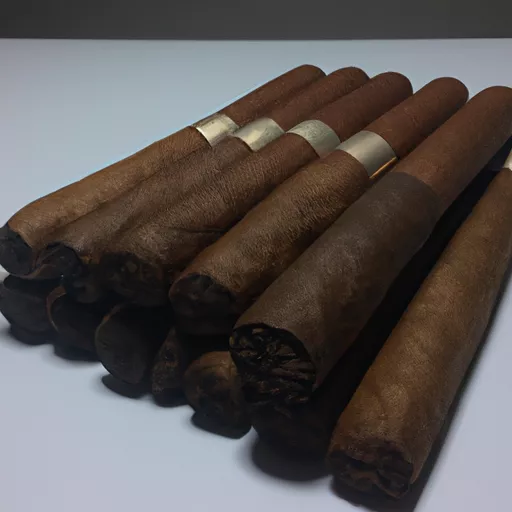
As a cigar enthusiast, I have always been intrigued by the world of tobacco and its many forms. One particular type that has caught my attention lately is little cigars. These miniature versions of traditional cigars may be small in size, but they pack a punch when it comes to flavor and quality. In this article, I will take you on a journey through the world of little cigars and explore their history, flavors, and why they are becoming a popular choice among cigar lovers.
First, let’s start with the basics. Little cigars, also known as cigarillos, are cigar-shaped tobacco products that are smaller in size compared to traditional cigars. They are typically slimmer and shorter, with a length of around 3 to 4 inches and a ring gauge of 20 to 30. This makes them a convenient option for those who prefer a shorter smoke or don’t have the time for a full-sized cigar.
Now, you may be wondering, what sets little cigars apart from cigarettes? While both are tobacco products, they differ in their composition and method of consumption. Little cigars are made from natural, whole-leaf tobacco, while cigarettes are made from processed tobacco and often contain other additives. Additionally, little cigars are meant to be enjoyed like a traditional cigar, by cutting the tip and lighting it with a cigar match or lighter, whereas cigarettes are usually inhaled directly into the lungs.
The history of little cigars can be traced back to the early 1800s when they were hand-rolled in Cuba and known as “punch” cigars. They were a popular choice among sailors and soldiers due to their compact size and convenience. As the tobacco industry grew, little cigars became more widely available and gained popularity in the United States in the 1960s and 1970s. Today, they are produced all over the world, with notable brands coming from the Dominican Republic, Honduras, and the Netherlands.
One of the unique aspects of little cigars is their wide range of flavors. While traditional cigars are primarily known for their nicotine and tobacco flavors, little cigars come in a variety of flavors that appeal to a wider audience. These flavors can range from sweet and fruity to bold and spicy, offering something for every palate. Some of the most popular flavors include vanilla, cherry, chocolate, and coffee, just to name a few. With such a vast selection, it’s no surprise that little cigars are gaining popularity among both smokers and non-smokers alike.
Another reason for the popularity of little cigars is their affordability. They are often less expensive than traditional cigars, making them an excellent option for those on a budget or for those who want to try different flavors without breaking the bank. They also come in packs of 5, 10, or 20, making it easy to stock up and have a variety of flavors on hand.
In terms of quality, little cigars are held to the same standards as traditional cigars. They are made from high-quality, whole-leaf tobacco and go through a fermentation and aging process to achieve their rich and complex flavors. This attention to detail and quality is evident in the taste and aroma of little cigars, making them a satisfying smoke for any cigar lover.
Now, let’s address the elephant in the room – health concerns. As with any tobacco product, there are potential health risks associated with smoking little cigars. However, as they are made from natural, whole-leaf tobacco and do not contain the additional chemicals and additives found in cigarettes, they may be a slightly better option. It’s always important to consume any tobacco product in moderation and to prioritize your overall health and well-being.
In conclusion, little cigars offer a unique and enjoyable smoking experience for both cigar enthusiasts and new smokers. With their compact size, wide range of flavors, and affordability, they are gaining popularity in the cigar world. As someone who appreciates quality tobacco products, I highly recommend giving little cigars a try. Who knows, you may find a new favorite smoke in the palm of your hand.
